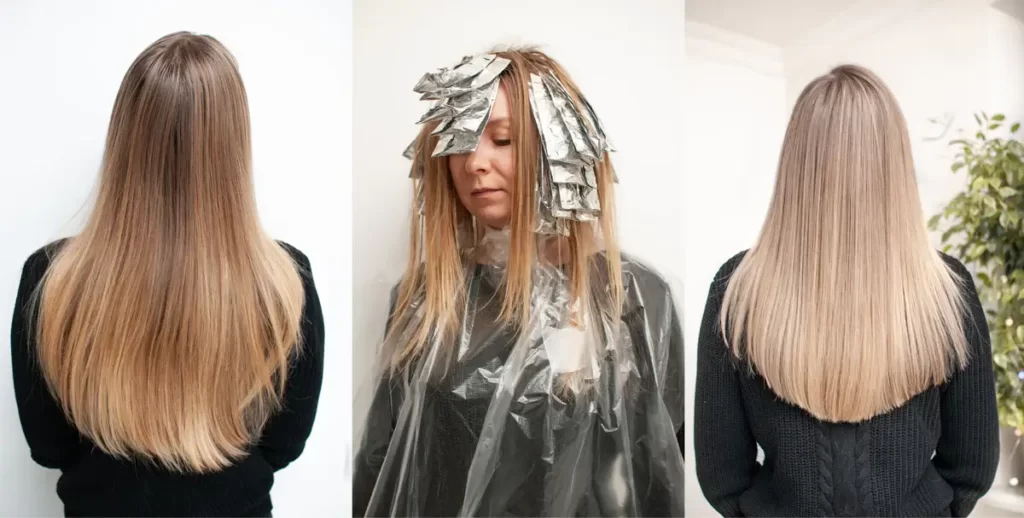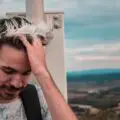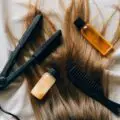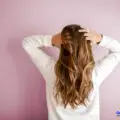Last Updated on May 23, 2023 by QCity Editorial Stuff
Yes, you can dye your hair after bleaching it. In fact, bleaching your hair is often done as a preparation step before applying hair dye, especially if you want to achieve a lighter color or if you have dark hair that needs to be lightened first.
The Science Behind Bleaching Hair
Bleaching hair involves a chemical process that lightens the natural pigment in the hair strands. The primary active ingredient in hair bleach is hydrogen peroxide. Here’s an overview of the science behind bleaching hair:
- Structure of hair: Hair is composed of a protein called keratin, which consists of chains of amino acids. These amino acids form the structure of the hair shaft.
- Melanin pigments: Melanin is the natural pigment responsible for the color of our hair, skin, and eyes. In hair, there are two types of melanin pigments: eumelanin (dark brown to black) and pheomelanin (yellow to red). The combination and concentration of these pigments determine our hair color.
- Bleaching process: Hair bleach, typically in the form of a powder or cream, contains hydrogen peroxide as the active ingredient. When applied to the hair, hydrogen peroxide acts as an oxidizing agent.
- Oxidation of melanin: Hydrogen peroxide penetrates the hair shaft and breaks down the melanin pigments through an oxidation process. It disrupts the chemical structure of melanin, causing it to become colorless.
- Lightening effect: As melanin is broken down, the natural color of the hair lightens, revealing the underlying lightened or bleached shade. The more melanin is oxidized and broken down, the lighter the hair becomes.
- Timing and developer strength: The timing of the bleaching process is crucial as it determines the level of lightening achieved. The strength of the developer (hydrogen peroxide concentration) used in the bleach affects the speed and intensity of the bleaching process.
- Damage and aftercare: Bleaching can be damaging to the hair as it strips away the natural pigment and can disrupt the hair’s structure. It can lead to dryness, brittleness, and increased porosity. Proper aftercare, including deep conditioning treatments and gentle hair care practices, is important to minimize damage and maintain hair health.
Factors influencing hair damage during bleaching

During the process of bleaching hair, several factors can contribute to hair damage. It’s important to be aware of these factors to minimize the potential harm to your hair. Here are some key factors that can influence hair damage during bleaching:
- Bleach strength and timing: The strength of the bleach and the duration it is left on the hair can significantly impact the level of damage. Higher concentrations of hydrogen peroxide or leaving the bleach on for too long can increase the risk of hair damage.
- Hair condition: The initial condition of your hair plays a role in how it responds to the bleaching process. Hair that is already damaged, brittle, or chemically treated is more susceptible to further damage during bleaching.
- Hair type and texture: Different hair types have varying levels of resilience. Fine or delicate hair is generally more prone to damage than thick or coarse hair. Additionally, hair that is already dry or porous may experience increased damage during the bleaching process.
- Previous chemical treatments: If your hair has undergone previous chemical treatments such as coloring, perming, or relaxing, it may be more vulnerable to damage during bleaching. Multiple chemical processes can weaken the hair structure and increase the risk of breakage or excessive dryness.
- Developer volume: The strength of the developer used in the bleach, typically represented as a volume percentage of hydrogen peroxide, can affect the intensity of the bleaching process. Higher developer volumes have a more aggressive effect on the hair and can lead to increased damage.
- Application technique: The way the bleach is applied to the hair can impact the outcome. Uneven application or overlapping of bleach on already bleached sections can cause uneven lightening and potential damage.
- Aftercare: Proper hair care after bleaching is crucial to minimize damage. Failure to provide adequate hydration, nourishment, and protection to the bleached hair can lead to dryness, brittleness, and breakage.
Timing Considerations for Dyeing Hair After Bleaching
Timing considerations for dyeing hair after bleaching:
- Rest and recovery: After bleaching, it’s essential to give your hair time to rest and recover before proceeding with dyeing. This allows the hair cuticles to reseal and regain some strength. Aim for at least a few days to a week of recovery time, depending on the condition of your hair.
- Hair condition assessment: Assess the condition of your hair before dyeing. If it feels excessively dry, brittle, or damaged after bleaching, it’s advisable to wait until it improves. Deep conditioning treatments and nourishing hair masks can help restore moisture and improve the hair’s overall health.
- Porosity of the hair: Bleached hair tends to have increased porosity, which means it absorbs and releases moisture more easily. It’s important to consider the porosity of your hair when dyeing. Highly porous hair can take color more quickly and may result in uneven or intensified color. You may need to adjust the dyeing time accordingly.
- Color selection: The color you choose to dye your hair can also impact the timing. Some colors require longer processing times than others. Follow the instructions provided with the hair dye and consider any specific timing recommendations for the desired color.
- Strand test: Before applying the dye to your entire head, perform a strand test on a small section of hair. This helps determine the timing needed for achieving the desired color and allows you to assess any potential adverse reactions or unexpected results.
- Follow dye instructions: Read and follow the instructions provided with the hair dye product carefully. They usually include specific recommendations regarding timing, application, and processing.
- Professional guidance: If you’re uncertain about the timing or dyeing process, it’s advisable to seek professional guidance from a hair stylist. They can assess the condition of your hair, provide personalized advice, and help ensure the best results.
Techniques for Dyeing Bleached Hair
When dyeing bleached hair, there are several techniques you can consider to achieve the desired color and minimize potential damage. Here are some common techniques for dyeing bleached hair:
- Single-process color: This technique involves applying a single shade of hair dye to the bleached hair. It can be used to enhance the existing color or create a new shade. Follow the instructions provided with the hair dye and apply it evenly to the hair, making sure to saturate all strands.
- Root touch-up: If you have regrowth or want to touch up the roots, focus the dye application on the new growth while avoiding overlapping with already dyed hair. This technique helps maintain consistent color throughout the hair and minimize damage to previously bleached sections.
- Balayage or highlights: Balayage involves hand-painting highlights onto the hair to create a natural, sun-kissed effect. This technique can be used to add dimension and depth to bleached hair. It’s typically done by applying the hair dye in a sweeping motion to select strands or sections of hair.
- Ombre or gradient color: Ombre is a technique where the hair transitions from a darker color at the roots to a lighter color towards the ends. It can be achieved by applying the hair dye selectively along the length of the hair. Gradual blending and careful color application are key to achieving a smooth ombre effect.
- Toning: After bleaching, you may need to tone the hair to neutralize any unwanted brassy or yellow tones. Toning involves using a semi-permanent or demi-permanent hair color in a cool shade, such as ash or silver, to counteract the warm tones. Follow the instructions provided with the toner and apply it evenly to the bleached hair.
- Professional assistance: If you’re unsure about the dyeing process or desire more complex color transformations, it’s advisable to seek professional assistance from a hair stylist. They have the expertise to assess your hair, suggest suitable techniques, and achieve desired results while minimizing damage.
References:
https://www.curlcentric.com/can-you-dye-your-hair-right-after-bleaching-it
https://youprobablyneedahaircut.com/can-you-dye-your-hair-after-bleaching/






